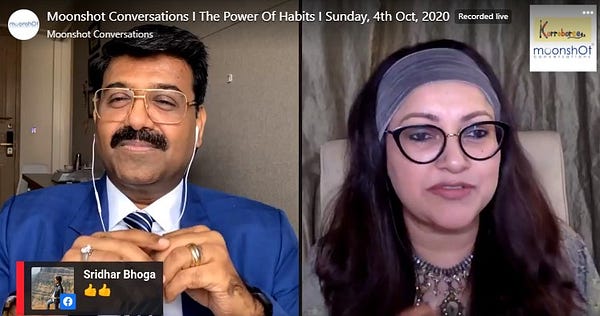The Science Behind Adopting New Habits (Forbes): Well, if you really want to make your new habits stick, then you need to be honest with yourself and approach your new habits in a realistic and progressive way (after all life is a marathon, not a sprint).
The Power of Habits — How to Teach Kids Good Habits for Life (Medium.com): However, when it comes to our children’s habits, this is one area that is almost 100% influenced by environmental rather than biological factors. So, if we are going to focus anywhere, then helping our children develop good habits from a young age is a great place to start.
Try something new for 30 days (TED Talks): Is there something you’ve always meant to do, wanted to do, but just … haven’t? Matt Cutts suggests: Try it for 30 days. This short, lighthearted talk offers a neat way to think about setting and achieving goals.
Watch Moonshot Conversations with Lina Ashar and Agnelorajesh Athaide on The Power of Habits-
The science behind all that ‘create a routine’ advice (Nat Geo):Identify the reason for your routine. Understanding the goal for why your family needs a particular routine is critical for success, Badaly suggests. Knowing the what and why of a task helps identify the elements of a routine needed to make it happen — and make it stick.
Breaking habits with a flash of light (National Geographic): Habits, by their very nature, seem permanent, stable, automatic. But they are not, and the MIT rat tells us why. Earlier, Kyle Smith had added a light-sensitive protein to one small part of its brain — the infralimbic cortex (ILC). This addition allows Smith to silence the neurons in this one area with a flash of yellow light, delivered to the rat’s brain via an optic fibre. The light flashes for just three seconds, and the habit disappears. The rat hears the tone, but no longer heads down the chocolate arm.



